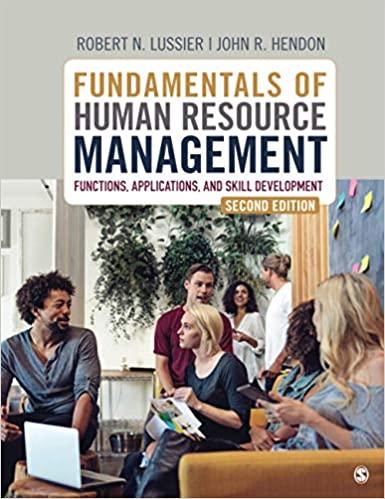When oil hit $26.21 a barrel in 2016, down from nearly $100 a barrel from 5 years
Question:
When oil hit $26.21 a barrel in 2016, down from nearly $100 a barrel from 5 years earlier, jobs in the oil service industry were rare and people out of work. “Everyone [was] so hungry, it [was] like we were hanging a steak in front of a bunch of starving people,” said Joseph Triepke, founder of the industry research company Infill Thinking in Dallas. A year later with oil at $55 a barrel, an employer like Piotr Galitzine is having a hard time keeping up with his orders and running 24/7 one of his Houston-based steel-pipe shops.67 The rising oil prices are fueling orders with the oilfield-equipment giant National Oilwell Varco Inc. as well, with a 10-year shift in their business from offshore gear to land-based. “It’s tough,” said the chief executive officer of Agility Energy Inc. “We’ve got commitments that are very difficult to keep right now because we can’t get the drivers.”68 Surprising since truckers who haul fracking sand have a starting pay of around $80,000/year.
Yet this shift of employment in this market segment is not evident when looking at the larger labor picture since unemployment for the most part has been unchanged. The Bureau of Labor Statistics (the government agency charged with tracking U.S. employment) reported that long-term unemployment, defined as those being out of work for more than 26 weeks, remained stable at 1.8 million in February 2017. This constituted 23.8% of total unemployment. The annual rate of total unemployment dropped from 4.9% to 4.7% with the total number of unemployed remaining constant at 7.5 million.
Construction employment accounted for the largest growth in February 2017. Construction in general over the last 6 months accounted for job growth of 177,000 with a 1-month gain of 58,000 jobs. Heavy and civil engineering construction added 15,000 jobs while specialty trade contractors accounted for 36,000 jobs.69 With the price of crude oil doubling over the past 3 years, oil companies are quite busy. This growth has been supported by new technology that allows for faster drilling, more intelligent fracking, and locating a greater quantity of rich oil deposits. This boom could be very short-lived given the fact that finding good shale formations are hit-or-miss. Once found, the fracking process begins—the adjacent rock is bombarded with chemicals, water, and sand. The most stress-free drilling is in pancaked layered formations (predominately found in the Permian Basin of New Mexico and west Texas).
When business booms, so does employment. Canada and the United States are outpacing worldwide expenditures on production and exploration by 4:1, with the U.S. outpacing the last oil surge with an additional 125,000 barrels a day since September 2016.
“Every time I push that computer button that says ‘approved’ on the rehire, I feel better.”70 CEO Galitzine of pipe-supplier TMK Ispco, the U.S. unit of Russia’s TMK PJSC, said that just over the past 4 months he has hired nearly 300 employees, increasing the number of his workers to the highest level since January 2016; yet he feels this boom of oils prices may not last.
“When we were at $100, to look at $50 would have been very scary …
Now, the confidence $100 used to instill can probably be had at $65 …
That’s how much cost has been squeezed out of the supply chain. So $65 is the new $100.”71 Is Galitzine right? Supply and demand drives the industry and Galitzine is tracking how growth in shale drilling is offsetting the November reduction of 1.2 million barrels a day of crude from the 13-member Organization of Petroleum Exporting Countries and Russia.
Bryan Sheffield, chief executive officer of Parsley Energy Inc., is worried that the boom/bust cycle will repeat itself, he just doesn’t know when. “For every barrel that OPEC cuts, the American shale drillers are putting on half a barrel. If that remains, then I think we’re okay.” If shale fields start churning out much more, “then who knows what’s going to happen to the price of oil,” he said. “Probably nothing good.”72
Questions
1. One of the two main goals of strategic HRM is to ensure the correct number of employees with the types of skills the organization requires. Given the boom/bust nature of the oil services industry, what external factors in this case should an HRM manager monitor to ensure that employment needs are met?
2. What types of jobs and related skill sets seem to be in short supply currently in the oil supply industry given the increase in construction employment in the past year? Which of the three new HRM challenges and four reasons for managing human resources does this issue mostly closely address?
3. HR managers have several disciplines of responsibilities. Which disciplines does this case directly and indirectly address?
4. Given the feast/famine cycle in the oil supplier industry, what trends and issues in HR address the necessity of retaining these firms’ best employees?
5. The people quoted in the case are all CEOs of their firms and not HRM managers. Why would CEOs concern themselves with HR issues if these issues are the responsibility of HR managers?
Step by Step Answer:

Fundamentals Of Human Resource Management Functions Applications And Skill Development
ISBN: 9781544324487
2nd Edition
Authors: Robert N. Lussier, John R. Hendon





